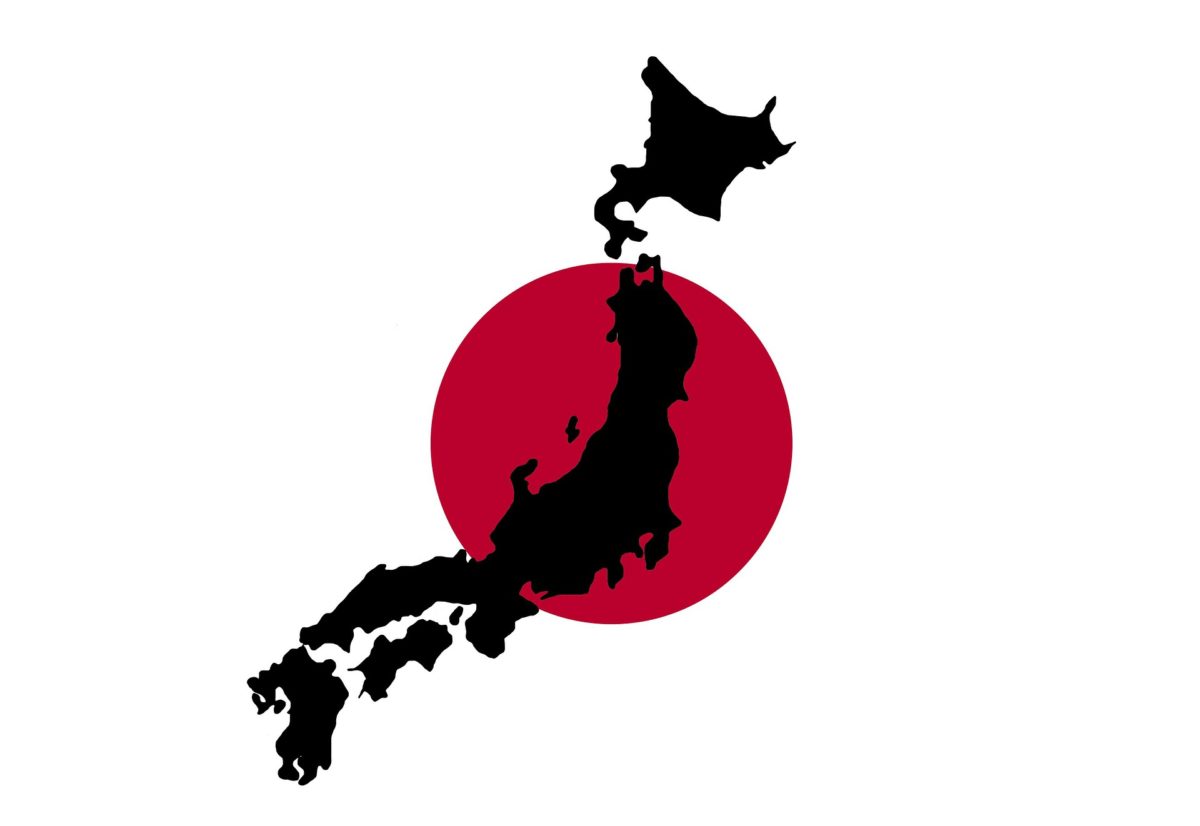More news
- Focus on industrial: Powering the energy industry during extreme heat
- Focus on powder coatings: The coatings industry’s transition to PFAS/PTFE-free solut...
- “We see sustainability as a purpose, as a reason for doing business” – P...
- Focus on industrial: High-performance coating protects tanks at biopolymer production plan...
- Focus on powder coatings: Novel high-speed crosslinking technology

Kathryn Wortley reports for PPCJ from Tokyo on how Japan’s paint sector is struggling to sell to private consumers but the B2B segment is robust
Japanese paint manufacturers are facing challenging times – reducing costs where possible as the price of inputs rise, to reduce pressure on final product pricing as they deal with a local consumer market with declining consumption. Economic pressures caused by geo-political turbulence and the weak Japanese yen are both creating challenges, according to industry experts.
“Demand for paints in Japan [among the residential and private consumer segment] has been declining for the past few years,” a spokesperson of the Japan Paint Manufacturers Association told PPCJ. He attributed the trend to the rising price of paint in response to the increasing price of the chemicals required for production. Costs have been exacerbated by the impact of Russia’s invasion of Ukraine and the yen’s depreciation, particularly in late 2022 and late 2023, he said. As of December 10, US$1 bought Japanese Yen JPY144.98, compared to JPY136.53 on December 10, 2022.
Manufacturers agree that rising costs are dampening B2C sales but on the plus side, B2B sales are being supported by growth in other areas, notably the automotive industry.
“The income of end users has not kept pace with the rise in prices, and consumption is declining,” a spokesperson for Osaka-based Nippon Paint Holdings Co Ltd told PPCJ. Moreover, the cost and labour to repair older buildings are also on the rise, depressing demand for repairs and renovation and hence, paint sales.
“Among those purchasing, there is a trend towards less expensive products, such as commodity products, rather than higher value-added products, such as antimicrobial paints,” he added.
Tomoe Horiguchi, of the investor and public relations department at Osaka-based Kansai Paint Co Ltd, reported a slowdown in sales following an uptick in 2020: “During the pandemic, paint demand for DIY surged as people nested, but home remodelling has been sluggish for the past year due to a drop in consumer confidence,” she said.
Still, Japan has the third-largest market size for paints and varnishes regionally, after China and India, with demand reaching US$11.5bn in 2022, according to an October 2023 report by London, UK-based market researcher Euromonitor International [1].
Moreover: “Manufacturers are compensating for production cost increases by revising product prices and compensating for demand decreases by improving production efficiency and reducing costs,” said the Nippon Paint spokesperson.
READ MORE:
Antifouling and automotive leads the way
Although 2023 data is not yet available, the Japan Paint Manufacturers Association forecasts 104% yr-on-yr growth for the industry in fiscal 2023 (April 2023 to March 2024), according to figures sent to PPCJ.
The two top performers are expected to be paints for the automotive sector, with 109.9% yr-on-yr growth and antifouling paints, with 105.5% year-on-year growth, according to the same forecast.
Kansai Paint’s Horiguchi estimates domestic automotive production will reach 9.2 million units in fiscal 2023, up from 8.1 million units in fiscal 2022, thanks to some recovery in supply of semiconductors. “Production of new automobiles has recovered, and more paint is being used for new automobiles,” she said.
Japan’s increase in antifouling paint production builds on a 118.4% yr-on-yr increase in production recorded in calendar year 2022, according to data from Japan’s ministry of economy, trade and industry [2].
The trend reflects greater interest in the latest innovations in antifouling paint to reduce the carbon footprint of ships. By preventing buildup on the hull, the coating lowers hydrodynamic drag and improves fuel efficiency – important for Japan’s major shipbuilding sector that constructed 9.5 million gross tonnage of vessels in 2022, according to German statistical service Statista.
Such demand for these paints may increase, given in January (2023), the International Maritime Organisation (IMO) released the Carbon Intensity Indicator, that evaluates their energy efficiency and requires poorly performing vessels to improve [3].
Nippon Paint is among the Japanese manufacturers innovating in antifouling paint, thereby “contributing to CO2 reduction,” the company said in a note. Its latest antifouling brand, FASTAR, which was launched in 2021, sold as helping ships be “faster and more eco-friendly,” and uses nanotechnology to repel micro-organisms [4].
Sustainability remains key
Becoming more environmentally friendly is a priority for the industry, said the Japan Paint Manufacturers Association spokesperson, pointing to growth in products that address environmental issues. These include thermal barrier paints, for example: “Long-term, the trend is toward thermal barrier paints as they help solve environmental problems by reflecting ultraviolet rays,” said Kansai Paint’s Horiguchi. “By lowering the surface temperature of roofs and exterior walls and controlling the rise in indoor temperature, these paints can reduce energy use and carbon emissions.”
Automated driving is another growth area, with Nippon Paint conducting demonstration tests using its ‘Target Line Paint’ with various companies across Japan [5]. The coating enables light detection and ranging (LiDAR) technology to recognise dark colours such as black paint used on asphalt road surfaces, thereby helping to create the infrastructure required for automated driving.
The Japan Paint Manufacturers Association also noted growth in sales of more environment-friendly water-based paints for the purposes of automotive repair and anti-corrosion, to support the automotive industry.
The future also looks bright for Japan’s protective coatings market, though, with Hyderabad, India-based market intelligence firm Mordor Intelligence predicting a compound annual growth rate of 4% from 2023 to 2028 [6].
The Nippon Paint spokesperson said that such sales of high-tech paint could be grown in the consumer market, but price remained a barrier: “If the products are inexpensive and highly functional, new growth can be expected, but with the current high cost of raw materials, this will be difficult.” He added: “Japan relies on imports for many raw materials and is therefore affected by raw material instability and foreign exchange rates that increase costs.”
For the time being, standard paints still make up the majority of sales in Japan. By commodity, emulsion, which is extremely versatile, was the paint type with the largest production volume in Japan during 2022 (231,930 tonnes) in 2022. This was followed by water-based resin (147,450 tonnes), urethane resin (112,980 tonnes) and epoxy resin (104,420 tonnes), according to data from Statista [7].
Japan’s paint exports are expected to drop by 6.3% in 2023, according to data from Lyon, France-based AI-enabled market intelligence platform ReportLinker [8]. That would be down from 137,210t in 2022, according to Statista.
Imports, meanwhile, are forecast to increase by 0.4% in 2023 and continue to grow, said ReportLinker, up from 65,600t in 2022 (according to Statista) [9].
Ultimately, for the time being, strong B2B sales in Japan are keeping its paint and coating sector on an even keel.
References
1 – https://www.euromonitor.com/paints-and-varnishes-in-japan-isic-2422/report
2 – https://www.toryo.or.jp/jp/data/files/2022_1-12r2.pdf
3 – https://www.imo.org/en/MediaCentre/PressBriefings/pages/CII-and-EEXI-entry-into-force.aspx
5 – https://www.nipponpaint-holdings.com/en/rd/technology/rd_technology_targetlinepaint/
6 – https://www.mordorintelligence.com/industry-reports/japan-protective-coatings-market
7 – https://www.statista.com/statistics/1260076/japan-paints-production-volume-by-commodity/
8 – https://www.reportlinker.com/clp/country/10379/726286
9 – https://www.statista.com/statistics/1353144/japan-paint-import-volume/







